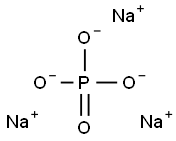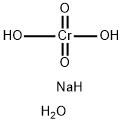Organic Chemistry
Atoms(radionuclides) with the same nuclear charge and different atomic mass are called isotopes. Since the late 19th century radioactivity is discovered, The number of radioactive elements discovered by humans has attached more than 30 kinds of until the early 20th century. And it was approved that, although some radioactive elements have obvious different radioactivity, their chemical properties are exactly the same. In 1910 the British chemist F. Soddy proposed a hypothesis, That there are chemical elements with different radioactive and different atomic weight that have the same chemical and physical properties, and these variants should be in the same place on the periodic table, called isotopes. Soon, two kinds of lead that one’s atomic weight is 206.08, and the other is 208 have been got from different radioactive elements.
In 1897 the British physicist W. Thomson discovered the electron, in 1912 he improved electronic measurement instruments, using magnetic field to invent a magnetic separator (the predecessor of the mass spectrometer). When he measured with neon gas, no matter how neon was purified on a screen and is given two parabolas, one represents the quality of Ne 20, and the other represents a mass of neon 22. This is the first discovery of stable isotopes, that is, non-radioactive isotopes. When F. W. Aston made the first mass spectrometer, it further shows that neon does have a different atomic mass of the two isotopes, and discovered 200 kinds of isotopes from other 70 kinds of elements. So far, the elements have been found 109 species, and there are only 20 elements from which no stable isotopes found, but all the elements have radioactive isotopes. Most of the natural elements are composed of several isotopic composition. There are about 300 kinds of stable isotopes, and radioisotopes are as many as 1500 or more.
- Structure:

- Chemical Name:Trisodium phosphate
- CAS:7601-54-9
- MF:Na3O4P
- Structure:

- Chemical Name:GOLD
- CAS:7440-57-5
- MF:Au
- Structure:

- Chemical Name:Sodium chromate tetrahydrate
- CAS:10034-82-9
- MF:CrH5NaO5
- Structure:

- Chemical Name:Sodium chromate
- CAS:7775-11-3
- MF:CrNa2O4
- Structure:

- Chemical Name:THALLIUM(I) CHLORIDE
- CAS:7791-12-0
- MF:ClTl
- Structure:

- Chemical Name:XENON
- CAS:7440-63-3
- MF:Xe
- Structure:

- Chemical Name:Indium trichloride
- CAS:12672-70-7
- MF:ClH4In
- Structure:

- Chemical Name:Exametazime
- CAS:105613-48-7
- MF:C13H28N4O2